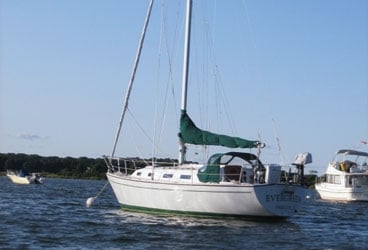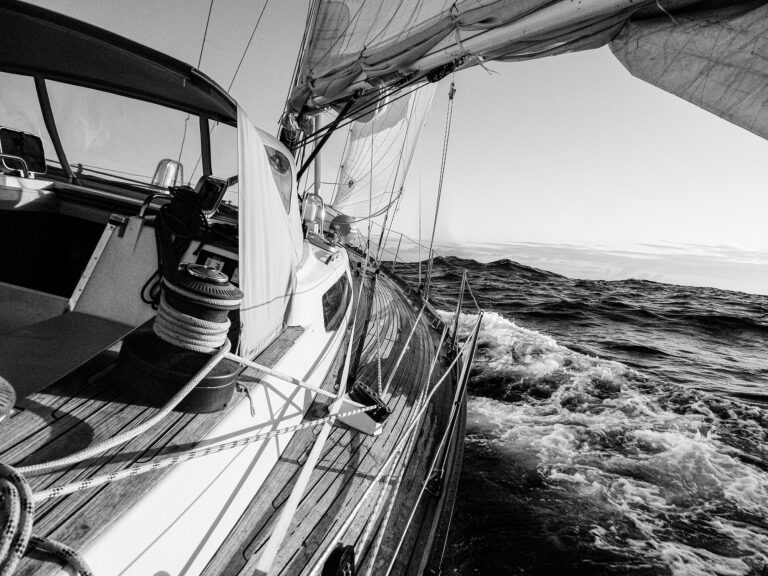
Pearson303cp368
By the early 1980s, Pearson Yachts of Portsmouth, Rhode Island, had built more than 1,000 Bill Shaw-designed Pearson 30s. To replace that seemingly timeless design, in 1983 Shaw created the Pearson 303, and it’s an entirely different boat. More than 300 were built before production ceased in 1986.
Above the waterline, the Pearson 303’s hull is solid laminate. Balsa core is used in the bottom and in the deck. The rudder is mounted to a substantial skeg, which helps the boat track well downwind.
With its broad beam, the Pearson 303 is quite stiff, and it likes to be sailed on its feet to avoid excessive weather helm. It has a seakindly motion and offers a dry ride and a comfortable, “big boat” feel.
Four adults can occupy the cockpit in comfort. On early models, the mainsheet was at the end of the boom, and with primary winches mounted just forward of the wheel, one person can singlehand with ease. Later boats had midboom sheeting from a traveler on the coachroof. A single-spreader rig supports the keel-stepped mast.
The companionway steps are easily removed to expose the two-piece box surrounding the 13-horsepower Yanmar diesel that will move a P-303 through calm water at 6 knots. Some owners feel it has insufficient power in rough conditions.
The galley, to port just forward of the companionway, is small but adequate. Its best feature, the well-insulated 5-cubic-foot icebox, unfortunately drains to the bilge. Most boats were fitted with a two-burner Origo alcohol stove and a small single sink serviced by both pressure and foot-operated freshwater pumps. A deep bilge sump ensures that the cabin sole stays dry.
Aft to starboard is a large quarter berth. Lockers outboard of it convert readily to a navigation station; later models have a chart table fitted at which the navigator can work while seated at the head of the berth.
Port and starboard settees in the saloon are comfortable berths with the seatbacks removed. A dining table folds down from the starboard bulkhead and has a leaf that extends to the port bench to allow seating for four.
Forward of the saloon and to starboard is the head compartment. Quite large for a 30-foot boat, it has standing headroom, a handheld shower, and an electric pump to drain the sump overboard.
A bifold door opens into a truly comfortable owner’s cabin. It has a small bureau and a large V-berth.
Headroom throughout the cabin is more than 6 feet. Large Bomar hatches, above both the forward and main cabins, and four large fixed ports and four opening ports provide plenty of light and air below.
At prices from $30,000 to $35,000 for examples in good condition, the Pearson 303 is an economical and versatile family cruiser from a builder with a reputation for producing solid and reliable boats.
Bob Reeve sails his Pearson 303, Evergreen, from Old Saybrook, Connecticut, with his wife, Susan, and their teenage daughters, Allison and Kristen.








